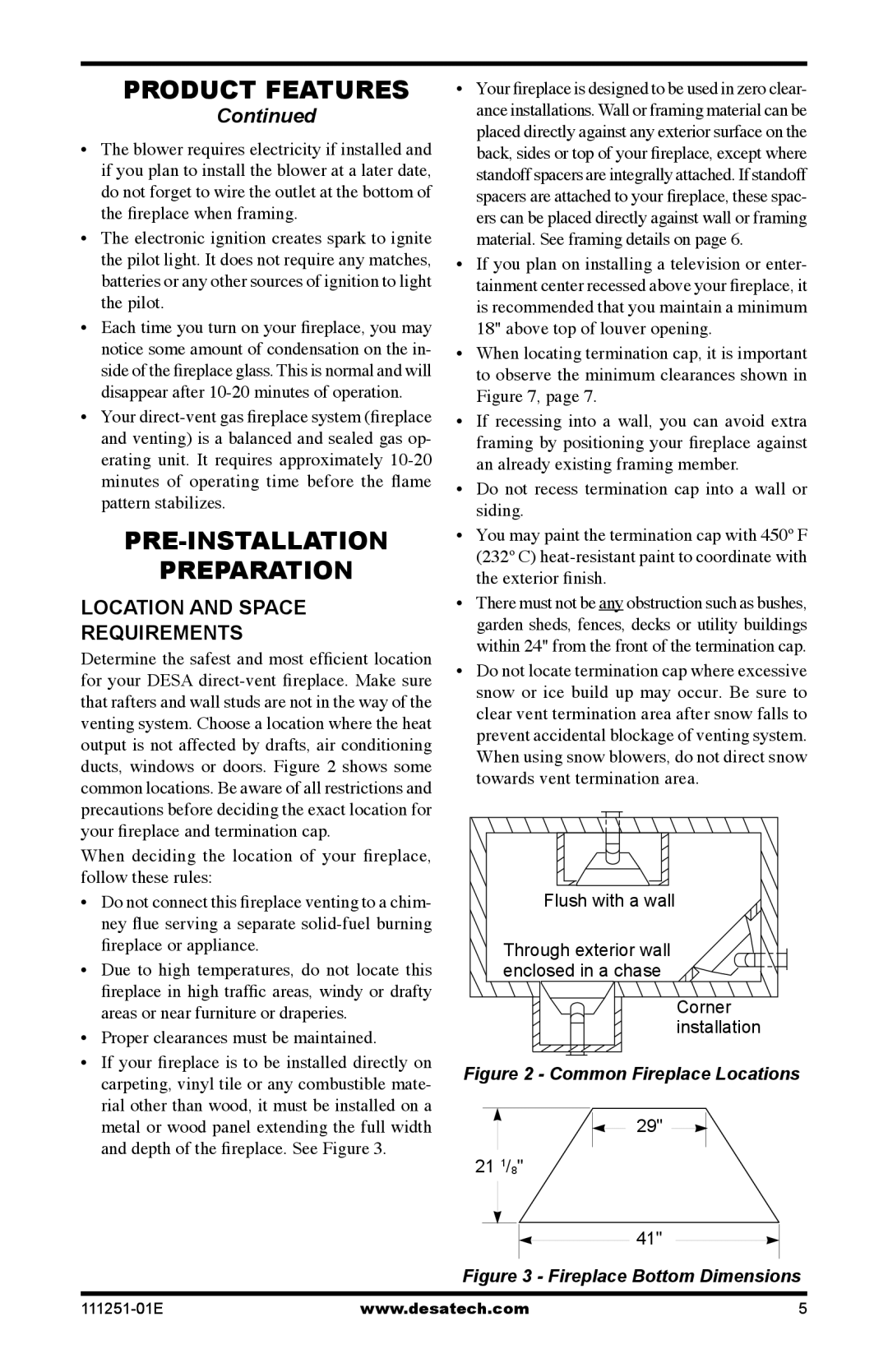
Product Features
Continued
•The blower requires electricity if installed and if you plan to install the blower at a later date, do not forget to wire the outlet at the bottom of the fireplace when framing.
•The electronic ignition creates spark to ignite the pilot light. It does not require any matches, batteries or any other sources of ignition to light the pilot.
•Each time you turn on your fireplace, you may notice some amount of condensation on the in- side of the fireplace glass. This is normal and will disappear after
•Your
Pre-Installation
Preparation
Location and space requirements
Determine the safest and most efficient location for your DESA
When deciding the location of your fireplace, follow these rules:
•Do not connect this fireplace venting to a chim- ney flue serving a separate
•Due to high temperatures, do not locate this fireplace in high traffic areas, windy or drafty areas or near furniture or draperies.
•Proper clearances must be maintained.
•If your fireplace is to be installed directly on carpeting, vinyl tile or any combustible mate- rial other than wood, it must be installed on a metal or wood panel extending the full width and depth of the fireplace. See Figure 3.
•Your fireplace is designed to be used in zero clear- ance installations. Wall or framing material can be placed directly against any exterior surface on the back, sides or top of your fireplace, except where standoff spacers are integrally attached. If standoff spacers are attached to your fireplace, these spac- ers can be placed directly against wall or framing material. See framing details on page 6.
•If you plan on installing a television or enter- tainment center recessed above your fireplace, it is recommended that you maintain a minimum 18" above top of louver opening.
•When locating termination cap, it is important to observe the minimum clearances shown in Figure 7, page 7.
•If recessing into a wall, you can avoid extra framing by positioning your fireplace against an already existing framing member.
•Do not recess termination cap into a wall or siding.
•You may paint the termination cap with 450º F (232º C)
•There must not be any obstruction such as bushes, garden sheds, fences, decks or utility buildings within 24" from the front of the termination cap.
•Do not locate termination cap where excessive snow or ice build up may occur. Be sure to clear vent termination area after snow falls to prevent accidental blockage of venting system. When using snow blowers, do not direct snow towards vent termination area.
Flush with a wall
Through exterior wall enclosed in a chase
Corner installation
Figure 2 - Common Fireplace Locations
29"
21 1/8"
41"
